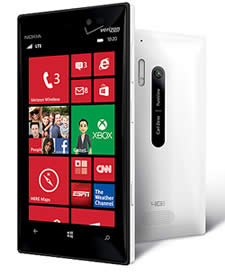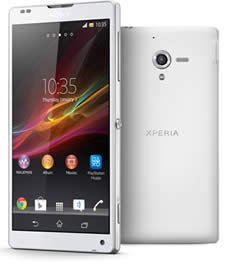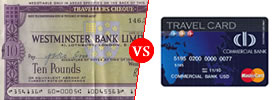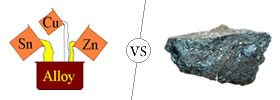Difference between Nokia Lumia 928 and Sony Xperia ZL
Key Difference: Nokia has recently announced a new phone to its line-up; the Lumia 928. The phone comes with a 4.5-inch AMOLED capacitive screen with broad back bezel. The phone is quite bulky and heavy, compared to other newer smartphones that are focusing on getting thinner and lighter. The Sony Xperia ZL is very similar to its counterpart the Xperia Z; however, it differs in some aspects and is also believed that it will be offered for a lower price compared to the Z. Sony has managed to make the ZL even smaller and more compact compared to the Z.
 Nokia has recently announced a new phone to its line-up; the Lumia 928. This phone is considered as the flagship phone for Verizon (a US telecommunications company) but it is also available in an unlocked version. In terms of hardware, the phone is very similar to Nokia’s flagship 920 but has added on extra features and tweaks that can go either way. Although, the phone has been modified, there are no revisions to the Windows Phone 8.
Nokia has recently announced a new phone to its line-up; the Lumia 928. This phone is considered as the flagship phone for Verizon (a US telecommunications company) but it is also available in an unlocked version. In terms of hardware, the phone is very similar to Nokia’s flagship 920 but has added on extra features and tweaks that can go either way. Although, the phone has been modified, there are no revisions to the Windows Phone 8.
The Nokia Lumia 928 does not share the physical characteristics of the 920. It is in a bar from that has a slight bulge on the back that makes the phone comfortable to hold. Another small curve can be found on the bottom on which speaker grille is strategically placed that keeps volume from getting muffled when placed flat on the back. The phone comes with a 4.5-inch AMOLED capacitive screen with broad back bezel. The phone is quite bulky and heavy, compared to other newer smartphones that are focusing on getting thinner and lighter.
The Nokia phones are known for the bright interactive colors, which are no longer an option in this model. The phone is available only in two options: matte black and glossy white. This is believed to be because it is a Verizon exclusive phone. The phone comes with the basic structure of the Nokia phones with the volume rocker, power button and a dedicated camera key on the right edge. The power button is very similar to volume rocker only slightly smaller, making it difficult to find it without looking. The volume rocker is also a little to access and hit during mid-call. The left side of the device is bare, while the top hosts a center-mounted Micro USB port, a pull-out SIM tray and a 3.5mm jack. The back stands out with a bigger Xenon flash and the camera with Carl Zeiss lens.
The phone comes with a 4.5-inch AMOLED capacitive touchscreen with ~334 ppi pixel density and boasts excellent sunlight readability. The AMOLED screen is better for side viewing angles and sunlight visibility. The phone does have excellent resolution and the images are sharp, crisp and clear. The screen can also be configured for ‘high touch sensitivity’ known as ‘glove mode’. The phone also has amazing speakers but almost all reviewers said that when talking on the phone, the voice on the other end sounded hollow and unrealistic. The loud speaker also lacks bass and depth. However, the noise cancellation on the phone works exceptionally.
The phone is powered by 1.5 GHz Krait Dual-core Qualcomm MSM8960 Snapdragon processor, making it fast. The phone does not lag or even slow down. As it is a windows phone obviously it is powered by the Windows Phone 8 OS. The Android vs. Windows Phone debate is always the same. Though, the OS is great, Android does have more apps to offer and is also more customizable. The phones offers 1 GB RAM and has 32 GB internal memory. For users looking to add more than 32GB of data will run out of luck, as it does not offer adding extra memory.
The device houses an 8.7 MP PureView rear camera and a 1.2 MP front camera. The rear camera comes with the Carl Zeiss optics for sharper images. It also comes with the typical autofocus, image stabilization, flash etc. However, Nokia does proud itself for its low-light image technology and rightfully so. The low-light images are quite sharp and does not blur. In addition to that, the company also offers xenon flash that is bright and powerful. The xenon flash can only be used as flash and cannot be left lit, so the company has also added a secondary flash for videos and flashlight purposes. The camera does have slow shutter speed, which requires people to hold the camera still for long periods of time to avoid motion blur.
The device houses a non-removable Li-Ion 2000 mAh battery (BV 4-NW) that boasts good power. The Verge could run the battery for approximately 27 hours, while Tech Hive got only 6.5 hours out of it. The power of the battery depends on running applications, usage and many other different factors. In all, the phone is okay but does not come close to its 920 cousin.
 Xperia Z and Xperia ZL are two phones that Sony has launched in competition to Samsung Galaxy S3 and iPhone 5. These two phones are similar in design and features, with only slight alterations to the ZL. These phones are Sony’s plan to put itself back on the smartphone market. Sony announced the phones at the 2013 CES in January.
Xperia Z and Xperia ZL are two phones that Sony has launched in competition to Samsung Galaxy S3 and iPhone 5. These two phones are similar in design and features, with only slight alterations to the ZL. These phones are Sony’s plan to put itself back on the smartphone market. Sony announced the phones at the 2013 CES in January.
The Sony Xperia ZL is very similar to its counterpart the Xperia Z; however, it differs in some aspects and is also believed that it will be offered for a lower price compared to the Z. Sony has managed to make the ZL even smaller and more compact compared to the Z. The ZL maintains the 5-inch display in the dimensions 131.6 x 69.3 x 9.8 mm. The ZL offers the same processor, internal storage capacity, RAM and software. The ZL is also available with 4.1 Jelly upgradeable to v4.2. The ZL is also slightly heavier than the Z but it does not make that big of a dent on the design.
The major difference is ZL does not offer the dust and water resistance that is boasted by the Z. However, it does offer shatter-proof sheet and scratch-resistance glass on the front. The back isn’t the glass that is available in the Z but has a matte or textured finish, making it easier and more comfortable to hold. The ZL also has slight differences in button and SIM slow placement. The SIM and microSD card slots are placed on the bottom lower of the back panel, while in the Z the slots are placed above the power button on the right hand side. The ZL also offers a dedicated camera button which is not available in its big brother. The ZL also lacks contact points which are available with the Z. The contact points allow the phone to be connected to a charging dock that is sold separately. The placement of the front camera also differs. The front camera in the Z was located on left-hand corner, while in the ZL it is located in the right-hand corner. However, this does not make a difference when using the phone for video conferencing. Two new features that the ZL boasts is infrared/IrDA functionality and one-touch mirroring. The IR feature allows the phone to be used as a remote with any device that supports IR and one-touch mirroring allows the phone to send, receive and play audio and video files by touching another device that supports the feature. The ZL has yet to be launched and the price has also not been fixed for the device.
The information for the detailed table about the two phones has been taken from the Nokia website, theverge.com, Sony Mobile website and GSMArena.com.
|
|
Nokia Lumia 928 |
Xperia ZL |
|
Launch Date |
May 2013 |
April 2013 |
|
Company |
Nokia |
Sony Mobile |
|
Size |
133 x 68.9 x 10.1 mm |
131.6 x 69.3 x 9.8 mm |
|
Display |
4.5-inch AMOLED capacitive touchscreen |
1920x1080 pixels, (~441 ppi pixel density) |
|
Screen |
768 x 1280 pixels (~334 ppi pixel density), 16 million colors |
5 inch scratch-resistant TFT |
|
Protection |
Corning Gorilla Glass 2 |
Shatter-proof sheet on scratch-resistant glass. |
|
Weight |
162 grams |
151 g (5.33 oz) |
|
2G Network |
GSM 850 / 900 / 1800 / 1900 CDMA 800 / 1900 |
GSM 850 / 900 / 1800 / 1900 - C6502, C6503, C6506 |
|
3G Network |
HSDPA 850 / 900 / 1700 / 1900 / 2100 CDMA2000 1xEV-DO |
HSDPA 850 / 900 / 1700 / 1900 / 2100 - C6502, C6506 HSDPA 850 / 900 / 2100 - C6503 |
|
4G Network |
LTE 700 MHz Class 13 / 1700 / 2100 |
LTE 700 / 850 / 1700 / 1900 / 2100 - C6506 LTE 800 / 850 / 900 / 1800 / 2100 / 2600 - C6503 |
|
GUI |
Windows Phone UI |
Timescape UI |
|
CPU speed |
1.5 GHz Krait Dual-core |
1.5 GHz Quad-core Krait |
|
GPU |
Adreno 225 |
Adreno 320 |
|
OS |
Windows Phone 8 |
Android OS, v4.1.2 (Jelly Bean), planned upgrade to v4.2 (Jelly Bean) |
|
Chipset |
Qualcomm MSM8960 Snapdragon |
Qualcomm MDM9215M / APQ8064 |
|
RAM |
1 GB |
2GB |
|
SIM Size |
microSIM |
microSIM |
|
Internal Memory |
32 GB |
Up to 16 GB |
|
Expandable Memory |
N/A |
up to 32 GB |
|
Sensors |
Ambient light sensor, Accelerometer, Gyroscope, Proximity sensor, Magnetometer |
Accelerometer, gyro, proximity, compass |
|
Connectivity |
NFC, Wi-Fi Channel bonding,2G, 3G, 4G, Wi-Fi, USB and Bluetooth |
4G LTE (100 mbps), GPS, GLONASS, USB, Bluetooth, NFC, Wi-Fi, DLNA and MHL. |
|
Data |
GPRS, EDGE, WLAN, Bluetooth, Wi-Fi, NFC, USB. |
GPRS, EDGE, WLAN, Bluetooth, NFC, Infrared port and USB |
|
Speed |
EV-DO Rev. A, up to 3.1 Mbps; HSDPA, 42.2 Mbps; HSUPA, 5.76 Mbps; LTE, Cat3, 50 Mbps UL, 100 Mbps DL |
HSDPA, 42 Mbps; HSUPA, 5.76 Mbps; LTE, Cat3, 50 Mbps UL, 100 Mbps DL |
|
WLAN |
WLAN IEEE 802.11 a/b/g/n |
Wi-Fi 802.11 a/b/g/n, dual-band, Wi-Fi Direct, DLNA, Wi-Fi hotspot |
|
Bluetooth |
Bluetooth v3.0 Object Push profile (OPP) 1.1, Hands-free profile (HFP) 1.5, Advanced Audio Distribution Profile (A2DP) 1.2, Audio/Video Remote Control Profile (AVRCP) 1.4, Phone Book Access Profile (PBAP) 1.1 |
Bluetooth v4.0 with A2DP |
|
USB |
microUSB 2.0 |
microUSB v2.0. |
|
Primary Camera |
8.7 MP PureView 3264 x 2448 Pixels |
13 megapixel Exmor RS camera with Auto focus and flash |
|
Secondary Camera |
1.2 MP, 720p@30fps |
2 MP 1080p Exmor R |
|
Video |
1080p@30fps, video stabilization, stereo sound rec. |
HD video recording (1080p) at 30fps, continuous autofocus, video light, video stabilizer |
|
Camera Features |
|
|
|
Sound Enhancement |
Dolby Headphone sound enhancement Active noise cancellation with dedicated mic |
xLoud Experience |
|
Audio supported formats |
ASF, MP4, AAC, AMR, MP3, M4A, WMA, 3GP, 3G2 |
MP3/eAAC+/WMA/WAV/Flac |
|
Video supported formats |
MP4, WMV, AVI, 3GP, 3G2, M4V, MOV |
MP4/H.263/H.264/WMV |
|
Battery Capacity |
Non-removable Li-Ion 2000 mAh battery (BV 4-NW) |
Non-removable 2370 mAh Li-Ion battery |
|
Talktime |
2G: 11.8 hours 3G: 13 hours |
Up to 10 hours |
|
Standby Time |
2G: 606 hours 3G: 513 hours |
Up to 500 hours |
|
Available Colors |
Black, White |
Black, White, Red |
|
Messaging |
SMS (threaded view), MMS, Email, Push Email, IM |
SMS (threaded view), MMS, Email, IM, Push Email |
|
Browser |
HTML5 |
HTML5 |
|
Radio |
N/A |
Stereo FM radio with RDS |
|
GPS |
GPS with A-GPS support and GLONASS |
Yes, with A-GPS support and GLONASS |
|
Java |
N/A |
Yes, via Java MIDP emulator |
|
Additional Features |
|
|
Image Courtesy: nokia.com, sonymobile.com









Add new comment